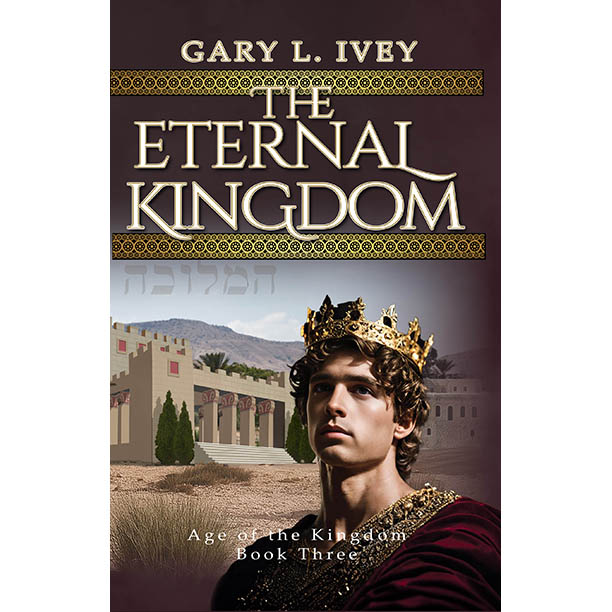(Image created in Dall-E AI and extended using Adobe Photoshop Generative Extend)
In my previous post, I began with generalities about my research for writing the Age of the Kingdom series. Now I’ll share a little of the source material I leaned on in my research.
Of course, my starting point is the Bible, and because I believe the Bible is a book of truths for life, I’m not going to stray too far from the events that are described there. I reread not just First and Second Samuel, but also the books that went before, Judges, Joshua and the Pentateuch. These books and their stories are inseparable from the events in Samuel and Kings, because it’s all one continuous narrative.
An example is the tragic tie between the trans-Jordan city of Jabesh-Gilead and the little Benjamite town of Gibeah in Judges and how that impacted King Saul when Jabesh was besieged, which is recounted in Quest. The first part of the story is in the last three chapters of Judges, but that’s just prologue to the later story in 1 Samuel.
In addition, the parallel record in the two books of Chronicles, while not so much a blow-by-blow account like Samuel and Kings, fill in a lot of gaps and contribute a great deal of additional color.
But of course, the Bible only relates the barest of outlines in these stories; there is a tremendous amount of backstory and cultural atmosphere the Bible doesn’t record. That’s where the “historical fiction” comes in.
In these books I have a lot of fictional characters who are in among the named biblical characters and, in situations where David or Saul, for example, did something that is recorded, but there are people all around them, carrying out orders, being sent as messengers, giving counsel, etc., but remaining unnamed in the scriptural narrative, those people are opportunities for fictional characters with their own lives and families. I try to show how the events of the Bible impact these characters that are background in the Bible, but foreground in my books.
After the Bible, I depend on a number of sources. The first I’ll mention is a great commentary on the book of First Samuel by Robert Alter, who is Jewish, but not a rabbi; he’s a journalist. The David Story: A Translation with Commentary of 1 and 2 Samuel (W.W. Norton, 1999) was fascinating for me because it was from the perspective of an observant Jew without any of the amplification and application given by the New Testament and Christian teaching. Also, it is based on the Masoretic text of the Hebrew Old Testament, whereas most translations of the Old Testament in Christian Bibles are based on the Septuagint, which ironically is older, even though it is a translation into Greek. I very much appreciated Alter’s insights and the variations in the text afforded me more than one twist in the stories that was unlike the usual Christian understanding.
Speaking of the Septuagint, I’ve had a copy in my library for years (Brenton, Sir Lancelot C.L. The Septuagint with Apocrypha: Greek and English. Hendrickson Publishers, 2009), so I made good use of it. I had to take five quarters of New Testament Greek to fulfill a requirement for my Theology degree, but I wasn’t required to take Hebrew, so about midway through my research I decided I needed to learn Hebrew, at least enough to be able to be conversant about word forms and meanings.
To accomplish this, I turned to a number of sources, all free. First, a phone app with the entire Old Testament with the Hebrew text in Aramaic type with vowel pointing, transliterated English letters for pronunciation and very basic English translation, plus Strong’s Concordance numbers, so you can go straight to the dictionary definitions, along with finding related words, meanings and roots. Additional apps provided exercises, vocabulary flash cards, etc. Next were a variety of YouTube channels, teaching modern Hebrew, which was marginally helpful for biblical Hebrew, but other channels which were devoted to biblical Hebrew, including classroom videos from a Christian seminary.
But what was especially helpful in the beginning was my trusty Strong’s Concordance which, though based on the King James Version, is still the most exhaustive (exhausting?) survey of all the words of the Bible and the part that was especially useful was the one page “alefbet” lesson at the beginning of the Hebrew section. It enabled me to get my feet planted in the language and I went back to it repeatedly as I learned.
I’m only mentioning a fraction of the sources I am relying on, but here is a good one: Illustrated Manners and Customs of the Bible, edited by J.I. Packer, and M.C. Tenney (Thomas Nelson Publishers, 1980). So much of the detail about food, clothing, housing, weapons, etc., I learned from this book and others like it.
“Digging” Deeper
Also vital to research for a series like this is the archaeological evidence. In one Facebook post, I described the books as “biblical, historical fiction,” to which some random person commented “Everything in the Bible is fiction!” I could have replied with something snarky, but that wouldn’t have been very “Christian,” would it? This person is obviously ignorant of the nearly 200 years of archeology in the Middle East and how it has clarified and often confirmed the biblical record.
In fact, it’s not too extravagant to say that archaeology has never contradicted the Bible, but only illuminated it and expanded our knowledge of events separated from us by so much time, distance and cultural differences. I’ll mention just one book: Hazor: The Rediscovery of a Great Citadel of the Bible, by Yigael Yadin (Random House, 1975). This paradigm-shifting dig in northern Israel revolutionized understanding of ancient times. Yadin was prominent in the founding of Israel and served as deputy prime minister for a time, but his great contribution was to archaeology. Hazor was one of the cities King Solomon rebuilt and fortified.
In addition, there have been numerous archaeological discoveries in the Holy Land during the almost 15 years that I’ve been doing this research. The most relevant perhaps is the discovery of King David’s palace in Jerusalem. Naturally some scholars are skeptical, but there are reasons to believe they have indeed found it, like the discovery of a large Phoenician capital that once sat atop a large rectangular pillar.
Of course there have been many more sources that have contributed to my research, but this list gives you a taste.







